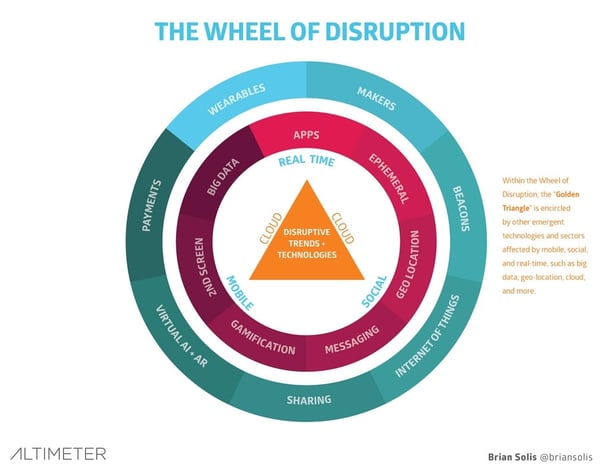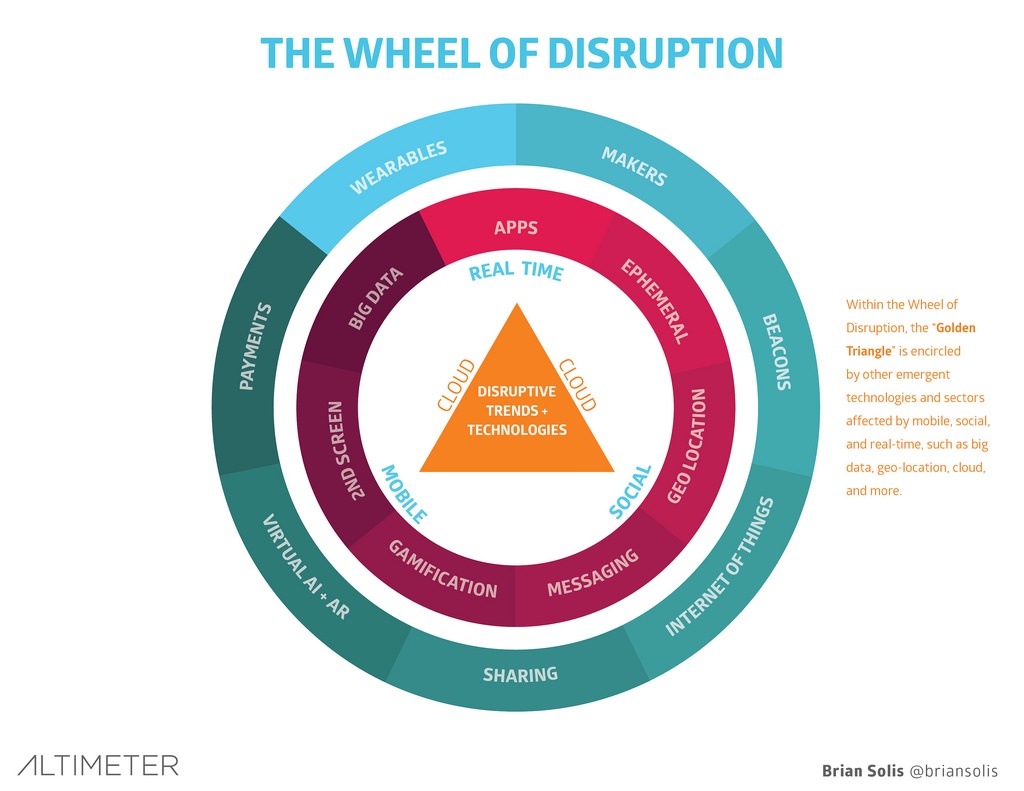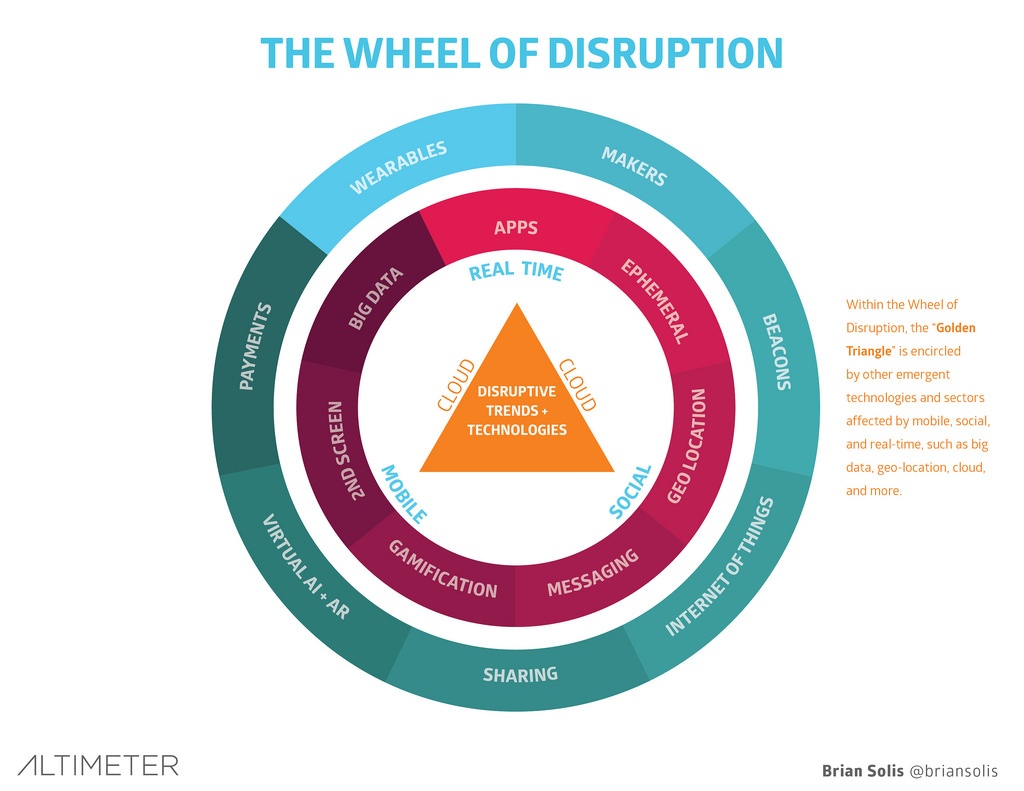The 5 Benefits & Role of Cloud Computing in Digital Transformation
Technologies like artificial intelligence, machine learning, big data, IoT etc. have given rise to innovative ways of doing business thus leaving the...
4 min read
Sales : Dec 4, 2017 12:00:00 AM

With technologies like big data, artificial intelligence, cloud and mobile disrupting the marketplace, enterprises are facing a substantial threat from startups and modern IT solutions. For instance, Blockchain has created a threat to the entire centralized banking system. Chatbots will automate the work of consumer helpdesk. Use of sensor technologies in homes has enabled enhanced security thus, posing a threat to the traditional security devices (as well as their manufacturers) and there are many more similar examples.
To keep up with the changing technological scenarios companies need to go change their structure to support agility. This is called digital transformation. In this blog, we will understand the meaning of digital transformation and the steps a CIO (or CxO) should take to strategically pivot their companies for this transformation.
Read More: The Role of Cloud Computing in Digital Transformation

Digital transformation can mean different to each company. This makes it difficult to explain it in layman terms. Wikipedia, for instance, explains digital transformation as “Digital transformation is the change associated with the application of digital technology in all aspects of human society”. This is a very broad definition which covers both social as well business aspects. At NewGenApps, we have a little more business focused statement for digital transformation:
“Digital transformation is the use of new age technologies over traditional business processes to build a scalable process of innovation, optimization and growth.”
This requires a company to shift from age-old management practices and activities towards more dynamic setups. Thus, digital transformation usually involves a change in a company’s culture and hierarchy. Digital transformation typically covers the following aspects of the business:
CEO Kevin Johnson perhaps gave the best explanation: “Where others are attempting to build a mobile app, Starbucks has built an end-to-end consumer platform anchored around loyalty.” The company’s main innovation is their Mobile Order and Pay app. This is a customer-first strategy at its core. By addressing the basic desires of the customers: convenience, line avoidance, discounts etcetera, Starbucks has created a unique app experience. When this experience is merged with an extensive loyalty program, the app gives Starbucks the perfect venue to up-sell and market to consumers without too much investment. Adding to the list of advantages of their app is the massive amounts of user data that funnels back to the company through it. This allows them to better understand their customers’ behavior and needs.
Read More: 9 Elements that Complete Digital Transformation

The steps to implement digital transformation varies largely based on the needs and goals of a business. Hence we can only provide you a framework to approach digital transformation which you will need to customize on the basis of your requirements:
Digital transformation begins with redefining the existing business process. This could be entire operations or something very minute like optimizing the customer feedback mechanism. Being the CIO (or CxO) it can be tough to change a process that has been working well for a business for years. This is the fundamental problem with digital transformation that it requires you to take calculated risks. You will need to analyze the markets and internal company data to find out the processes that have a scope for optimization.

While there are many recent technologies seeing rapid growth and adoption this doesn’t mean that you will need to implement all of them in your business. The choice of technology depends upon the process you are trying to optimize. Technology, as a matter of fact, is just a means to support your idea. People often get overwhelmed with the modern technologies and try to implement all of them in their current business processes. The focus should be on finding the technologies that rightly fit your business objectives and implement them effectively.
When you start with digital transformation it is highly unlikely to find the right fit in the first attempt. Even if you do find a good fit you will need a mechanism to implement new innovations easily in future. This requires the company to shift from traditional managerial hierarchy to engage more with employees on the lower end of the chain. It also means to redefine the culture to create a dynamic environment where opinions and changes are embraced rather than suppressed.
To implement innovative technologies, you will need skilled and dynamic people who are willing to shape the ideas into an actionable plan. Without skilled IT experts, it will be difficult to implement innovative technologies. Alternatively, you can outsource the enablement work to IT companies who are skilled in the technology you are trying to work on. The benefit of this approach is that you will save the recruitment and training expenses and will be able to pivot from one strategy to another. Even when you do outsource the project you will need an in-house team to communicate changes and implement them within the organization. In this case, the need to hire new people totally depends on the abilities of your existing workforce.
Now that you know what you need to do, it is time define the roadmap for execution. The entire implementation should be done in phases. Preferably you can test your hypothesis on a small scale before going all out with your plan. Each phase of execution should end with a risk mitigating milestone i.e. an achievement which shows the risk of execution being reduced. Securing approval from the top management, finalizing the vendors etc. are good examples of risk mitigating milestones.

A plan is incomplete without a goal. To measure the effectiveness of your plan you will need to set up some key performance indicators (KPIs). These metrics will demonstrate the effectiveness of the plan and will also guide the future decision making. You will need to set up smart goals that have a clear achievable figure along with a timeline. These goals will guide and optimize the entire execution and ensure that the team does not lose focus.
Once you have completed all the steps of digital transformation it is time to repeat. It is important that you regularly update your strategy based on the market conditions and results. You will need to continuously pivot your strategy until you find the right technologies and process for the digital age.
At NewGenApps, we specialize in working with modern technologies like IoT, AR, VR, Machine Learning and Big Data. Being an IT enabler since 2008 we have developed deep expertise in all the new age technologies with mobile and cloud being the key focus areas. If you need a customized solution to serve your business needs then feel free to contact us.

Technologies like artificial intelligence, machine learning, big data, IoT etc. have given rise to innovative ways of doing business thus leaving the...

Digital transformation is a process of modernizing a business in accordance with the current technologies and solutions. It has been one of the...

1 min read
When we talk about the transformation in the science and technology field along with the change of the time, the most important component that comes...